
Health plan solutions can help improve patient care, but will providers adopt them? Collaborating for care delivery can create a superior member and patient experience
13 minute read
14 February 2019
Health plans can help providers improve patient care through solutions that use patient- and population-level data and insights.
Most health plans have traditionally played a limited role in the provider and patient care experience, but this is changing rapidly. Increasing medical costs coupled with competition from disruptive players are causing many providers to rethink their care models, sources for data, and insights. These pressures are also causing health plans to rethink their growth strategies and the nature of their provider relationships. Health plans’ M&A, partnership, and investment activities are shifting from horizontal to vertical, as they join forces with health care providers, retail pharmacies, and pharmacy benefit managers (PBMs).1 Some employers are experimenting with direct provider contracting and offering employees their own primary care, altogether bypassing traditional insurers.2 New entrants bring a commitment to customer experience, a track record of reducing costs, and unparalleled analytics expertise, promising to reinvent the customer experience in health care.3
As health plans consider how to compete for the customer, (i.e., the member, patient, caregiver), collaborating with health care practitioners on the frontlines of delivering care can be a way to create a superior member and patient experience, improve outcomes, and lower costs. But are health care practitioners interested in working with health plans and are they willing to adopt the solutions health plans might offer to improve patient care? The Deloitte Center for Health Solutions conducted a study to help answer this question.
“Collaborating with health care practitioners on the frontlines of delivering care can create superior member and patient experiences, improve outcomes, and lower costs.”
About the study
Research objectives
Our goal was to understand how health plans could help support physicians and their staff in delivering better care and assess their openness to receiving this support from health plans. Specifically, we set out to understand:
- Health care practitioners’ interest in and their perceived value of potential solutions offered by health plans
- Barriers to adoption or utilization of health plan solutions and how health plans might overcome them to play a more active role in the patient’s experience of care
Survey design
We conducted the survey using an online panel of health care practitioners in September 2018. Physicians, nurse practitioners, physician assistants, nurses, and practice administrators from 300 US ambulatory primary care and specialty care practices completed the survey. Specialty practices included adult and pediatric endocrinology and adult cardiology.
The survey was designed with expert consultation from Andrew Wiesenthal, MD. With a deep understanding of both care delivery and insurance administration, Dr. Wiesenthal provided guidance to the research team on questionnaire development and interpretation of the findings.
Survey focus
We focused on the five areas in which health plans have existing capabilities or useful data:
- Care coordination: Aligning care across multiple providers or sites.
- Cost transparency: Knowing the costs associated with an individual patient’s care.
- Chronic care management: Caring for patients with complex or chronic conditions.
- Wellness and prevention: Enabling and ensuring that patients stay healthy.
- Practice performance: Meeting individual practices’ financial and quality goals.
Are physician practices open to solutions from health plans?
Our survey results indicate that they are: Two-thirds of the respondents are open to using solutions from health plans (see figure 1). They also think health plans have an edge, compared to other entities, when it comes to data and insights.
However, health systems are the preferred partner in all five areas (80+ percent) and, in respondents’ view, are even better positioned (71 percent) to provide data and insights than health plans (61 percent).
Nonphysician respondents are more open than physicians to working with different entities, including health plans. This may point to administrative demands on nonphysician staff, which are often underserved and could be addressed by health plan solutions (such as patient out-of-pocket cost and eligibility tools).

Implications
Health plans should partner more closely and more boldly with health systems
Since health care practitioners prefer to work with health systems, health plans should partner closely with health systems in designing and delivering solutions. After all, disruptors are threatening the business models of both health plans and health systems.
Coordinated design of solutions can, at first, revolve around what is known and measurable: gaps in care, and factors in CMS star ratings and the Healthcare Effectiveness Data and Information Set (HEDIS) scores.
But health plans can and should be bolder in their collaboration with health systems. Imagine network contract negotiations that bring new voices from both sides for cross-functional care delivery design sessions. Such sessions could identify opportunities for partnerships in data and analytics and lead to data and insights sharing provisions in network contracts (i.e., sharing of cost savings when plans and health systems exchange data and insights).
Solutions from health plans could even be white-labeled as coming from the health system to help drive better adoption. With more than half of physicians now employed by health systems,4 the decision to use health plan-provided solutions will most likely reside with hospital and health system administrators.
Furthermore, many of the services health care practitioners find valuable are not commonly available today and cannot be developed using off-the-shelf tools. This means that to get value out of their data and to deliver solutions that seamlessly integrate with physician practice workflows, health plans should partner with new stakeholders, such as electronic health record (EHR) vendors, data integration companies, practice management companies, private or public health information exchanges (HIEs), and public health entities.
What areas of support are most valuable to health care practitioners?
To assess interest in new solutions in each of the five areas, we asked respondents to rate the value of data, tools, and services (collectively referred to as services) that may be part of a comprehensive solution in that area. Almost all respondents (95–100 percent) find the services included in the survey to have at least some value. And they find many services extremely valuable.
What differentiates the high-rated from low-rated services is their ability to impact care or decision-making at the individual patient level (such as individual patient records) versus at the aggregate or population level (such as practice benchmarking or aggregate utilization reports on all practices’ patients).
“[A health plan] can look individually at each patient and their specific needs, which can be very time-consuming if we had to do it ourselves.”—Practice administrator
Care coordination
The most valuable services relate to care coordination, with multiple services rated “extremely valuable”: individual patients’ lab results, individual patients’ drug history, individual patients’ hospital or ER records within three days of discharge, and sending specialist consult notes to referring physicians on behalf of specialists (see figure 2).

Respondents from primary care practices see significantly greater value in care coordination services than their specialty care counterparts (see figure 4 in Appendix).
Cost transparency
Our survey data shows physicians and their staff often face challenges in the area of cost transparency: 37 percent of respondents consider this a major challenge for their practice. But cost-transparency solutions are the least common, available to just two in five respondents (43 percent).
When it comes to value, information about patient out-of-pocket costs and eligibility requirements for drugs and procedures is seen as the most valuable service in this area (see figure 2).
Nonphysician staff who often work closely with patients in managing financial considerations of care see even greater value than physicians in this information (see figure 5 in Appendix).
Chronic care management
Chronic care management represents a major challenge to one in three respondents (33 percent). In this area, transportation services to help patients get to medical appointments and medication nonadherence alerts to the practice and patient’s caregiver receive the highest value ratings (see figure 2).
We also found that the perceived value of all services included in this area is significantly higher among nonphysicians than among physicians (see figure 6 in Appendix). Chronic care management solutions are commonly available (with 82 percent of respondents reporting access), but this finding points to opportunities to improve existing offerings, especially for nonphysician staff.
Wellness and prevention
Automated reminders to patients and caregivers about medications and recommended medical checkups are the most-valued wellness and prevention services (see figure 2). Nonphysicians, practices with a less favorable payer mix (a payer mix that leans toward Medicaid and uninsured), and primary care practices find greater value in most wellness and prevention services (see figure 7 in Appendix).
Practice performance
In this area, performance on gaps in care across all patients is seen as the most valuable service. Nonphysician staff (45 percent) and practices with a less favorable payer mix (49 percent) see greater value in this information. In general, among the five areas covered, services in the practice performance category receive the lowest value ratings (see figure 2).
Implications
Design solutions that include multiple services
Solutions from health plans could include the most-valued services from the areas of care coordination, chronic care management, and wellness and prevention, taking advantage of the data that providers may not be able to easily obtain on their own. Such solutions could include:
Insights derived from multiple data sources that health care practitioners don’t have access to (enrollment data, health risk assessments, medical and pharmacy claims, disease management and wellness programs, immunization and disease registries).
Services that enable information sharing and communication among health care practitioners involved in patient care. For instance, health plans can work with hospitals to routinely submit admission, discharge, and transfer (ADT) notifications to plans, which in turn can share ADT data with patients’ regular physicians and consulting specialists.5
Services to optimize prescription drug usage, such as drug history insights, reminders to patients about taking their medications, and nonadherence alerts to patients’ clinicians and caregivers.
Target practitioners who need the most help at the point of care
Initially, solutions can target primary care and practices with high proportions of patients of lower socioeconomic status and/or with multiple chronic conditions. These types of practices see considerably greater value in many of the services included in our survey.
Solution developers should keep in mind that patient-level information is most actionable when it is available at the point of care.6
Keep investing in cost-transparency solutions
Health plan solutions for cost transparency can take advantage of their relative strength in 1) data and insights and 2) access to accurate and up-to-date information about the cost of services to the patient and the payer.
To stand out and provide the most value, health plans should consider targeting both physicians and nonphysician staff and customizing insights to different users. For instance, physicians could use these insights for ordering tests and prescriptions while nonphysicians who tend to be more involved in benefit verification and coordinating patient referrals may see value in additional details (such as network status or deductible).
What are the barriers to adoption of solutions from health plans?
Health care practitioners see both negatives and positives in working with health plans.
On the positive side, many respondents indicate health plans’ strengths include access to data and the potential to improve care quality. Data and care quality are linked: Health plans’ insights into cost, utilization, and gaps in care, and their focus on prevention can help improve care. These strengths can motivate physician practices to work with health plans, especially if they feel that their goals are aligned with health plans’ goals.
“I believe that health insurers could provide improved tracking and monitoring of patient health outcomes, since they have access to medication use, labs, and screenings.”—Primary care physician
Negatives include concerns about health plans’ motivation, intrusion in clinical decision-making, and perceived poor understanding of clinical issues. Respondents also fear a potential negative impact from health plans having too much knowledge about their practice or patients.
“Pro: They can easily identify their members and see across-the-board utilization. Con: It results in overly burdensome paperwork, no improvement in outcome, and no actual support to achieving the desired result.”—Primary care physician
The right incentives and evidence of solution effectiveness can convince those disinclined to work with health plans to consider doing so in the future. The most popular incentives from our survey include removing prior authorization requirements, granting preferred network status, and demonstrating that the solution can lower patient costs and improve outcomes (see figure 3).
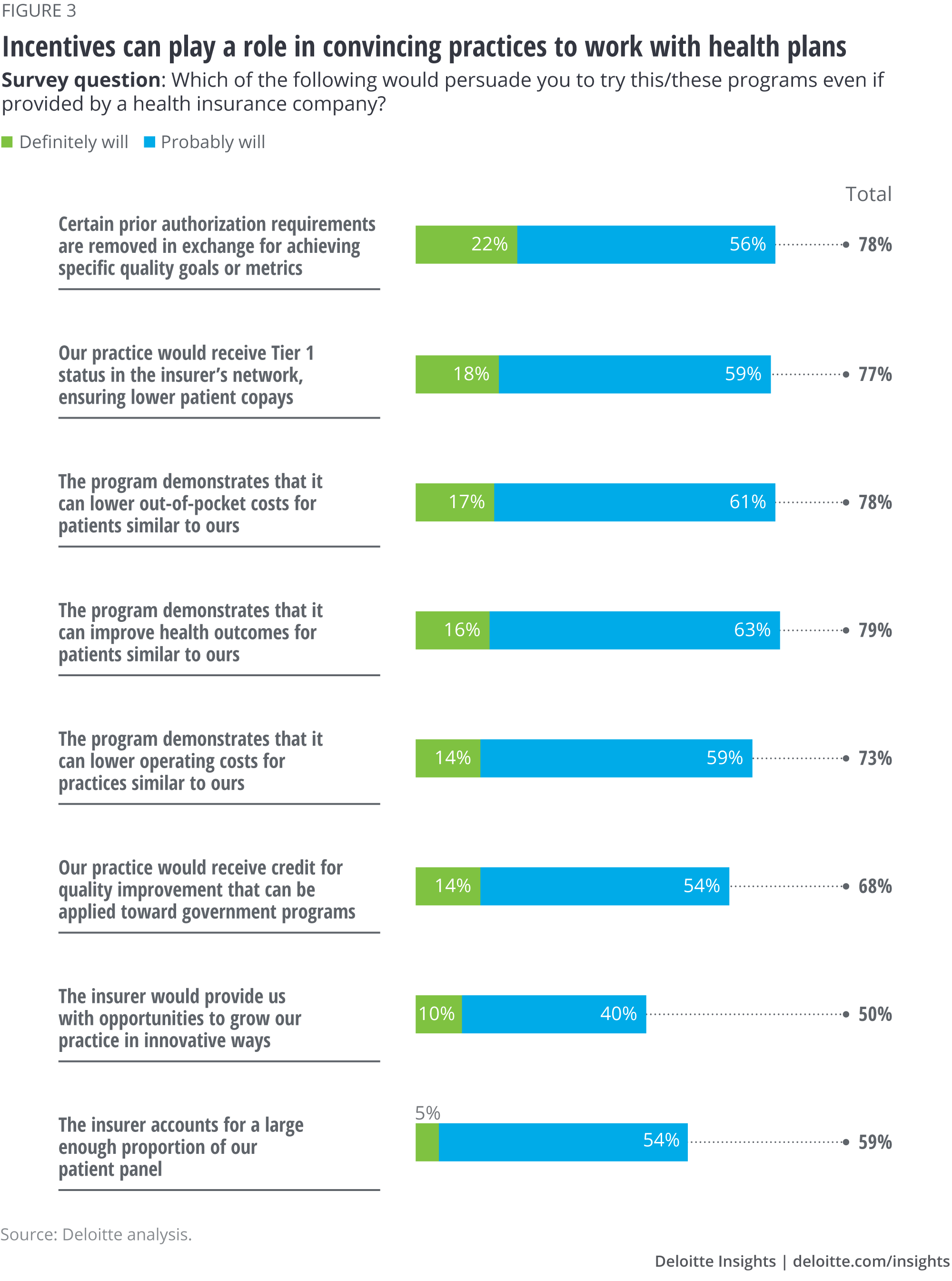
Implications
Design for an integrated patient and health care practitioner experience
Ideally, any new solutions should optimize both practitioner and patient experience. This calls for health plans and practitioners to cocreate solutions by understanding the patient journey, the practitioner experience of enabling access, delivering, and documenting care, and practitioners’ and patients’ pain points.7
To have any chance of adoption, health plans should recognize the many demands on health care practitioners’ time and attention. Thus, new solutions should minimize health care practitioners’ effort, integrating into their existing workflow and systems seamlessly.
Support health care practitioners one patient at a time
Solution developers should recognize health care practitioners’ primary focus: individual patient care. While health plans think of cohorts, populations, and risk, health care practitioners typically have a focus on individual patient needs.8 Therefore, the goal of solutions should be to help health care practitioners improve population health one patient at a time. Over time, health plans can tap into the power of advanced analytics to drive real-time patient-level insights.
“The goal of solutions should be to help health care practitioners improve population health one patient at a time.”
Conclusion: Treat physician practices as partners in care
The transition from a transactional vendor-client relationship between health plans and health care practitioners to a true partnership takes time, and the first steps in this journey can be to engage in a dialogue, acknowledge differences, and identify common goals.9
Many health care practitioners are receptive to solutions from health plans that can help improve patient experience and outcomes. Solutions that address unmet needs, complement existing capabilities, and provide insights that physician practices cannot get elsewhere could be well-received.
To design and implement such solutions, health plans should view physician practices as partners in care and develop an intimate understanding of practice workflows, the needs of individual physician practices, and the benefits sought by different users within the practice (physicians, care teams, administrative staff). Solutions designed in this manner can see high adoption and usage, drive value for the users, and help improve patient care quality, outcomes, and cost.
Appendix: Additional data

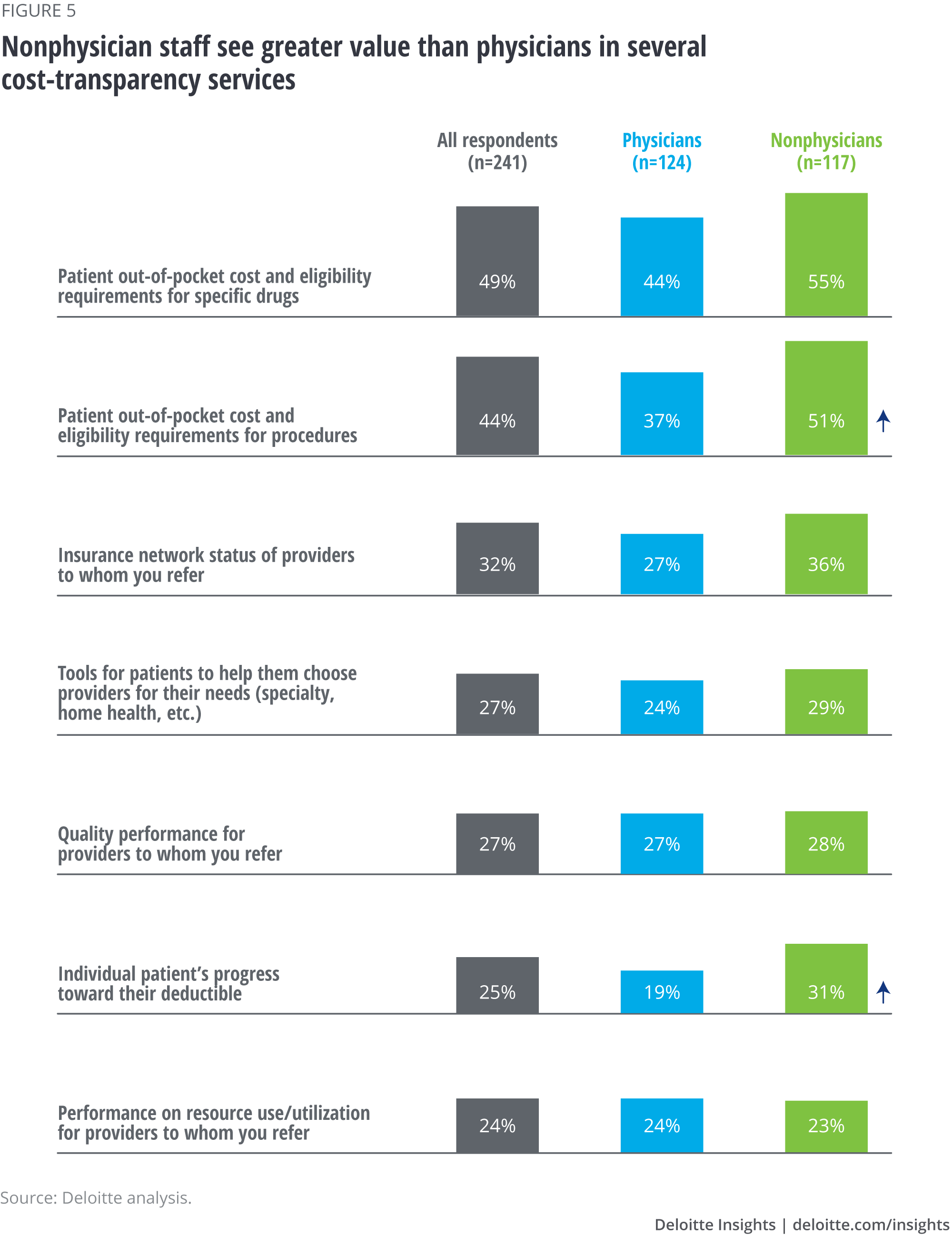
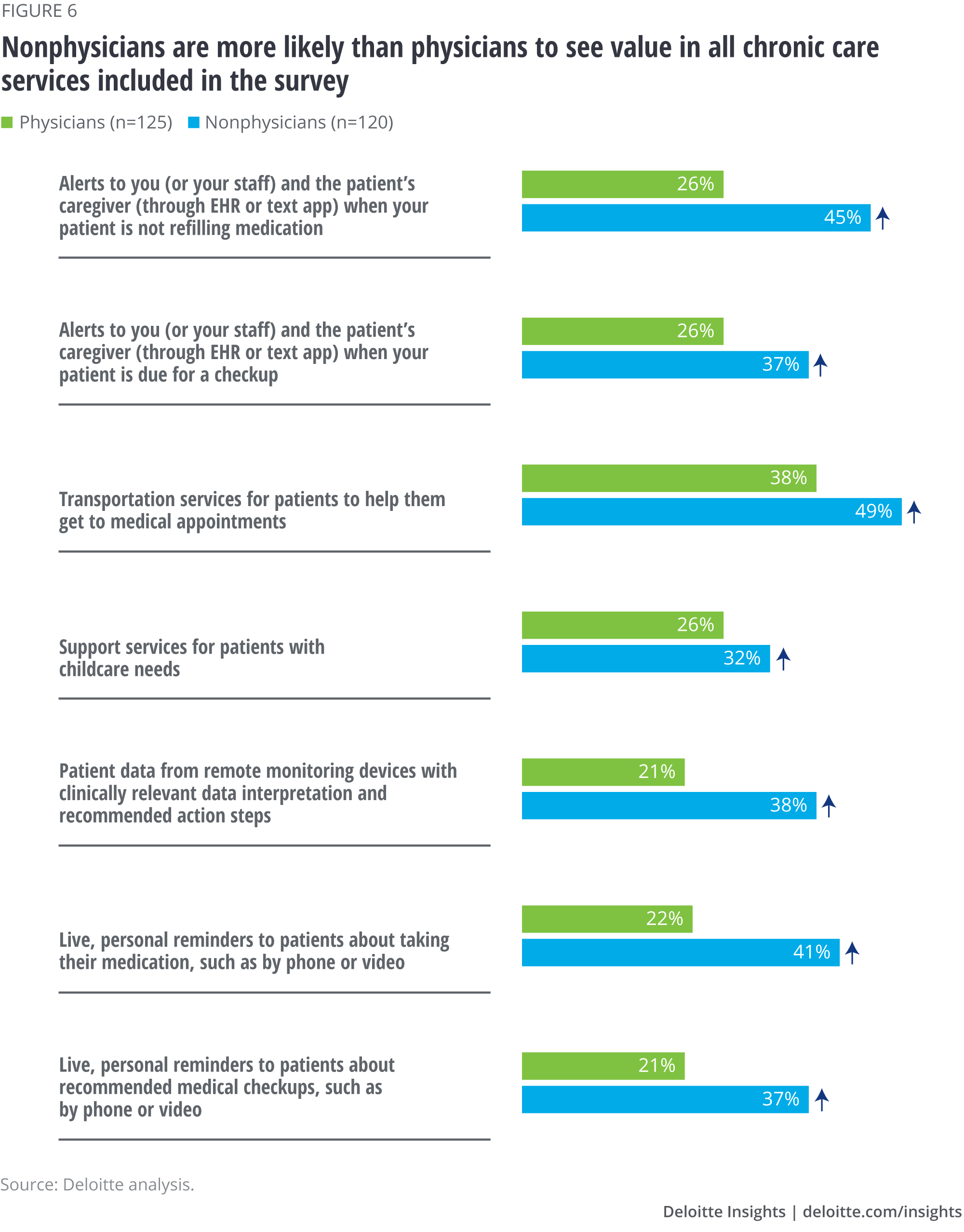
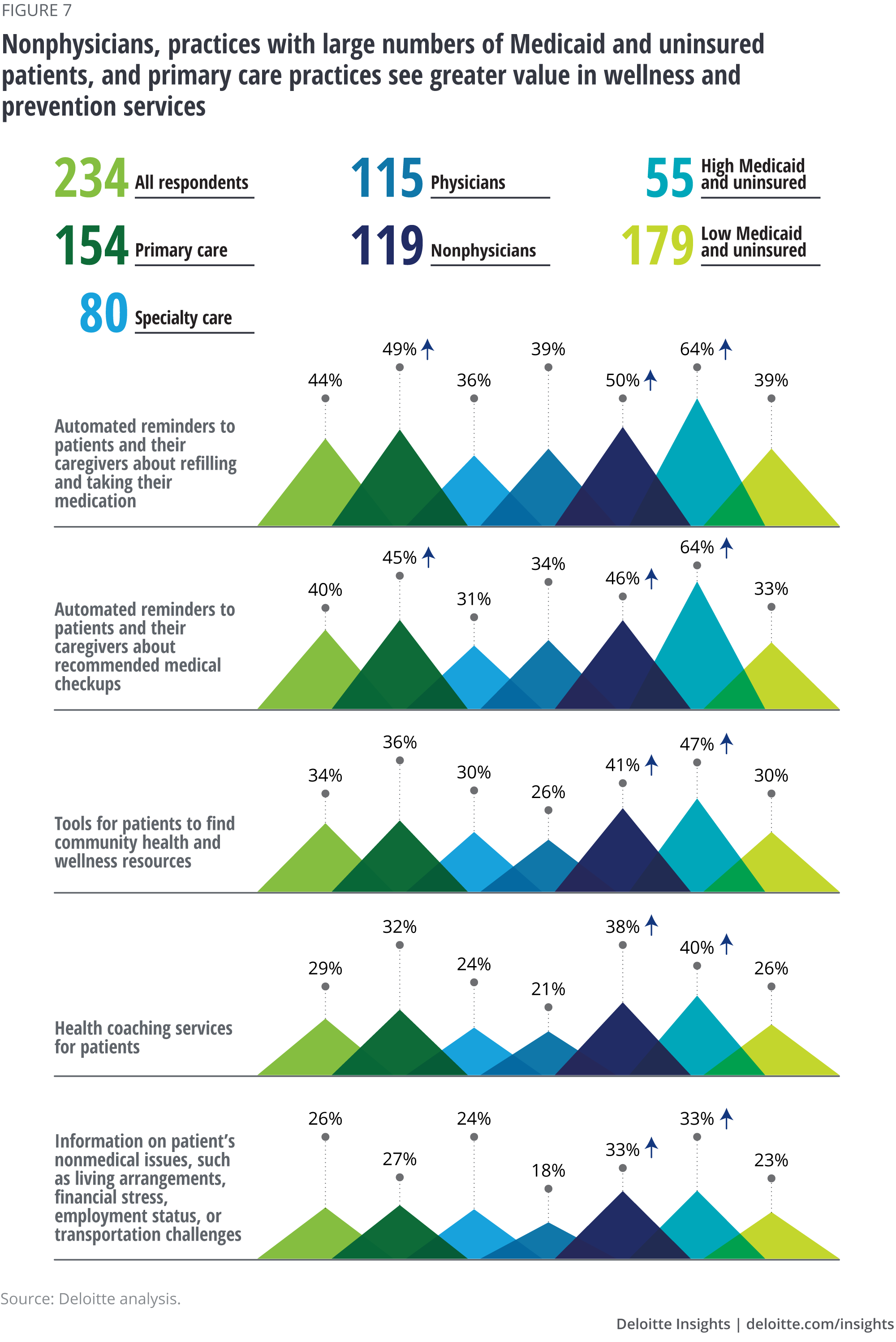
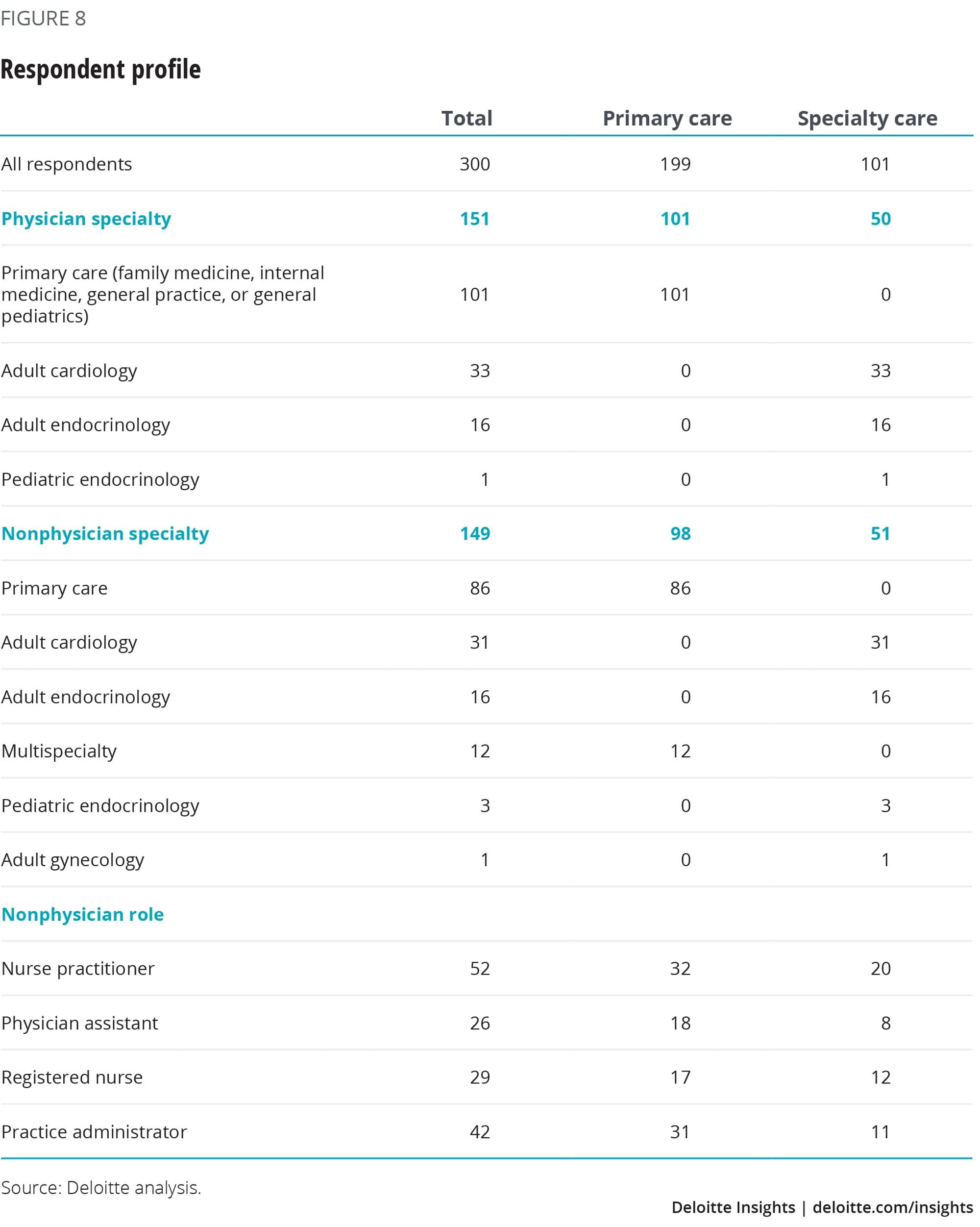
© 2021. See Terms of Use for more information.
Learn more about patient care and outcomes
-
Inside the patient journey Article6 years ago
-
How quality and value incentives spur growth in outpatient care Article6 years ago
-
Consumers are on board with virtual health options Article6 years ago
-
How do consumers navigate the health care frontier? Article6 years ago











